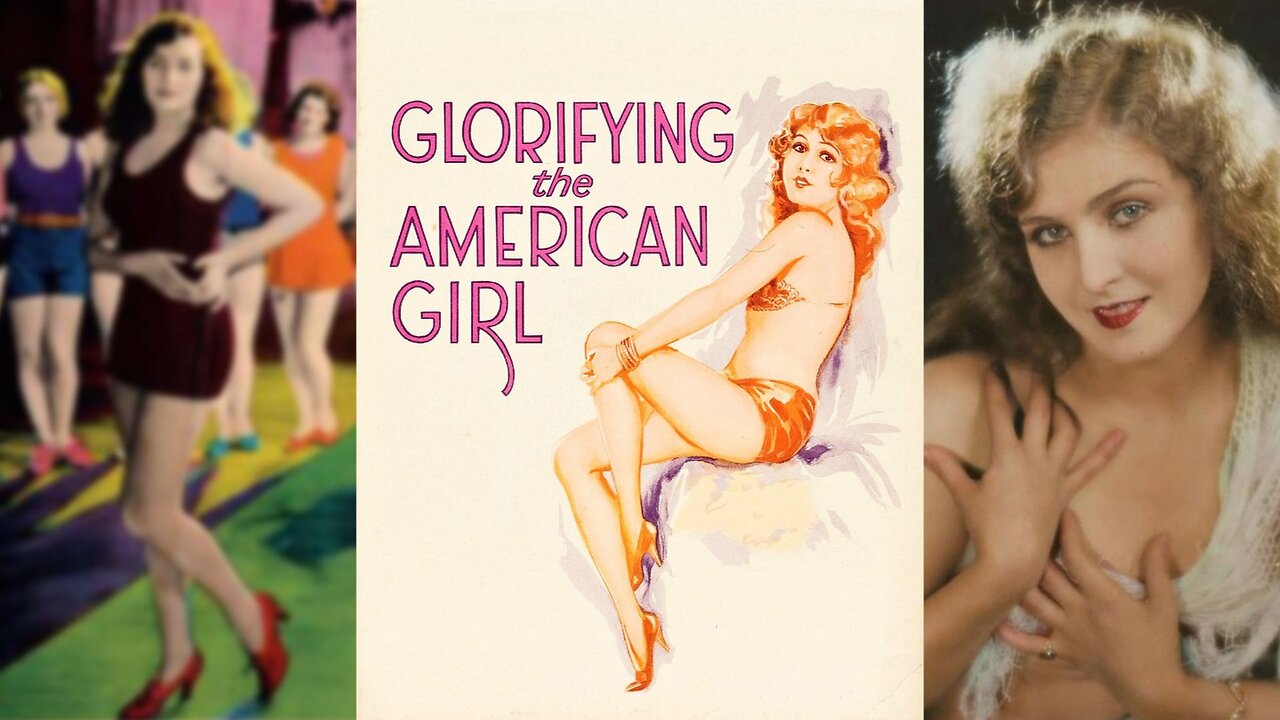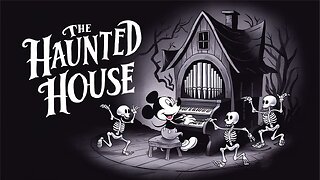Premium Only Content

GLORIFYING THE AMERICAN GIRL (1929) Mary Easton & Eddie Cantor | Comedy, Drama, Musical | COLORIZED
Glorifying the American Girl is a 1929 American pre-Code musical comedy film produced by Florenz Ziegfeld that highlights Ziegfeld Follies performers. The last third of the film, which was filmed in early Technicolor, is basically a Follies production, with appearances by Rudy Vallee, Helen Morgan, and Eddie Cantor.
Rex Beach was paid $35,000 for the original story.
The script for the film was written by J.P. McEvoy and Millard Webb and directed by John W. Harkrider and Millard Webb. The songs were written by Irving Berlin, Walter Donaldson, Rudolf Friml, James E. Hanley, Larry Spier and Dave Stamper. The film is in the public domain, and many prints exhibited on television are in black-and-white only, and do not include pre-Code material, such as nudity.
SYNOPSIS
The rise of a showgirl, Gloria Hughes, culminating in a Ziegfeld extravaganza "Glorifying the American Girl".
The plot involves a young woman (Mary Eaton) who wants to be in the Follies, but in the meantime is making ends meet by working at a department store's sheet music department, where she sings the latest hits. She is accompanied on piano by her childhood boyfriend (Edward Crandall), who is in love with her, despite her single-minded interest in her career. When a vaudeville performer (Dan Healy) asks her to join him as his new partner, she sees it as an opportunity to make her dream come true.
CAST & CREW
Mary Eaton as Gloria Hughes
Dan Healy as Danny Miller
Kaye Renard as Mooney
Edward Crandall as Buddy Moore
Gloria Shea as Barbara (billed as Olive Shea)
Sarah Edwards as Mrs. Hughes
Lou Hearn as tailor shop customer
Cameo Appearances
Noah Beery
Irving Berlin
Norman Brokenshire
Billie Burke
Eddie Cantor
Desha Delteil
Charles B. Dillingham
Texas Guinan
Otto Kahn
Nancy Kelly
Ring Lardner
Bull Montana
Helen Morgan
Tony Sansone
Louis Sorin
Rudy Vallee
Jimmy Walker
Johnny Weissmuller
Joseph Urban
Florenz Ziegfeld Jr.
Adolph Zukor
Directed by John W. Harkrider, Millard Webb
Written by J.P. McEvoy (story), Millard Webb
Produced by Florenz Ziegfeld
Cinematography George J. Folsey (Technicolor)
Music by Irving Berlin, Walter Donaldson, Rudolf Friml, James E. Hanley
Distributed by Paramount Pictures
Release date December 7, 1929
Running time 96 minutes
Country United States
Language English
NOTES
This Pre-Code movie is notable for being the first talkie to use the word "damn" (that credit usually goes to either Pygmalion or Gone with the Wind). The word is used twice by Sarah Edwards as well as multiple times in the skit involving Eddie Cantor, Louis Sorin and Lew Hearn. (The word was also used twice in the film Coquette, released in April of the same year.) The revue sequence contains virtual nudity and revealing costumes. Both Paramount and EMKA failed to renew the copyright and the film is now in the public domain. EMKA's successor, Universal Studios, continues to hold the original film elements; though technically the EMKA library is part of NBC Universal Television, successor to Universal Television and MCA Television (EMKA was a subsidiary of MCA). The movie contains brief shots of Noah Beery, Irving Berlin, Billie Burke, Charles B. Dillingham, Texas Guinan, Otto Kahn, Ring Lardner, and Mayor of New York City Jimmy Walker as themselves, taken from newsreels and other productions. There is an uncredited, non-speaking scene with Johnny Weissmuller wearing nothing but a fig leaf. The greater part of the final half of the film is a revue given over to a re-creation of a Follies production, replete with musical solos by Rudy Vallee and Helen Morgan and a comedy sketch with Eddie Cantor and Louis Sorin as a pair of Jewish tailors.
The black-and-white prints currently shown on television, with a cut-down running time of 87 minutes, were made in the 1950s and have a number of sequences cut due to their Pre-Code content, i.e. nudity, etc. The film was restored, to the length of 96 minutes, with the original Technicolor sequences, by the UCLA Film and Television Archive.
The film was a box office flop, with low-quality sound technology and low-value stars, and with little success among retrospective critics.
-
 6:32
6:32
Lost n Found Films
3 days agoTHE HAUNTED HOUSE (1929) George Magrill & Walt Disney | Comedy | Short | Free Movie
1002 -
 2:23:55
2:23:55
Barry Cunningham
7 hours agoPRESIDENT TRUMP IS NOT PLAYING AROUND...AND THE LIBNUTS CAN'T STOP HIM!
65.6K53 -
 22:02
22:02
Stephen Gardner
13 hours ago🔥JUST IN: Trump BETRAYAL plot EXPOSED!
84K255 -
 38:32
38:32
The Why Files
21 days agoThe Real CIA Vol. 1: 693 Pages of Secret Crimes
97.9K59 -
 49:12
49:12
MattMorseTV
10 hours ago $1.27 earned🔴Zelenskyy is NOT HAPPY about Trump’s NEW DEAL.🔴
101K137 -
 1:03:49
1:03:49
Warren Smith - Secret Scholar Society
4 days ago"You are on the brink" - My Conversation with Nick Fuentes
74.8K61 -
 8:05
8:05
Tactical Advisor
11 hours agoNEW Best Budget AR15 | PSA Guardsman (FIRST LOOK)
71.6K27 -
 8:55
8:55
Warren Smith - Secret Scholar Society
3 days agoMatt Walsh EXPOSES a Leftist's Lie So Badly She Flees the Stage
61.5K32 -
 25:05
25:05
Digital Social Hour
10 hours ago $0.23 earnedScott Jennings: The Fight for Free Speech: Scott Jennings Speaks Out
48.5K13 -
 1:29:24
1:29:24
Steve-O's Wild Ride! Podcast
3 days ago $0.14 earnedDarby Allin Risked His Life And Career To Climb Mt Everest | Wild Ride #262
45.5K